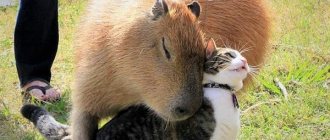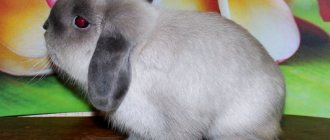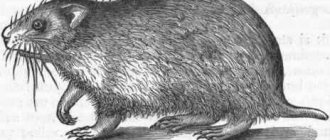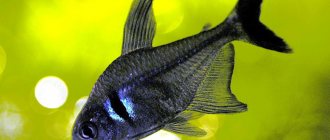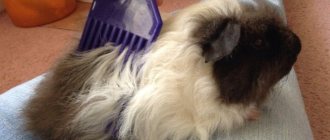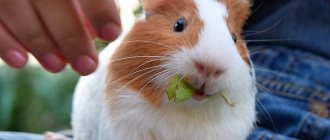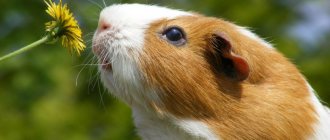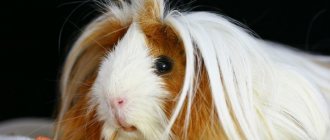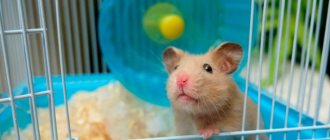- home
- Kinds
10/20/2018 When choosing a hamster for home keeping, the first thing you pay attention to is the color of the coat and its quality.
Then they are interested in the breed and living conditions of the animal. Some people like buffy, spotted, white or cream hamsters. But when a black hamster catches your eye, it is impossible not to notice it.
Black hamster - who is he?
A black hamster may have white paws and “socks”, but nothing else - no inclusions of a different color. This is a rare color that practically does not occur in nature, because the chances of two black representatives of the hamster species meeting are scanty.
The black hamster is not a breed or subspecies, but merely the result of a genetic code passed on from a female and a male with a black coat color.
It is possible to breed such a hamster at home, but it is extremely difficult. You need to get two different-sex representatives of the same black breed. Otherwise, even with a positive result, you can get non-viable offspring or kill the female. Of the dwarf breeds, it is permissible to cross a Campbell and a Dzungarik hamster.
The highest probability of finding a black “coat” is among Dzungarian or Syrian breeds of hamsters.
Variety of colors of dzungaria
Among Djungarian hamsters, black animals are rare. More often you can find a rodent with a natural color: a brown back with a dark longitudinal stripe, a light belly and white paws. This color is most common among dzungarians.
There are also unusual colors of animals:
- “Tangerine” color with red fur and a stripe along the back, like a natural color.
- Hamsters have sapphire-colored gray-blue fur.
- White color (“pearl”) is the rarest in Djungarian hamsters. White hamsters do not have a stripe on their back.
Syrian
The hamster was brought to Europe from Syria, where it lives in large numbers in the vicinity of the city of Aleppo. Under natural conditions, this animal can be found in eastern Turkey, in the foothills of Georgia. In winter they sleep like most hamsters.
The standard length for a Syrian hamster is 13.5 cm. At home, it can grow up to 20 cm. A distinctive feature of the body structure is a short tail, which may not be immediately noticed. This is one of the largest species that is bred at home. This is a clean animal that can bring joy.
Nature has endowed the rodent with four-fingered front paws and five-fingered hind paws.
The traditional color of Syrian hamsters is golden. But there are also white, beige, and chocolate brown. The black Syrian hamster looks very elegant. The fur is pleasant, soft and thick. Animals of this breed turn out beautiful if one of the parents is black and the other is white. The game of contrasts suits this nimble representative of the hamster family very well. A black and white hamster is as rare as a pure black one.
Children love Syrian hamsters very much; the animals willingly make contact and quickly understand what is required of them.
On a note. A positive feature is that the animal rarely gets sick and is quite unpretentious to its living conditions. You need to make sure that he has conditions for outdoor games, fresh food and clean water.
Breeding
Golden hamsters are highly fertile. These rodents are capable of producing 3-5 litters per year. The female Syrian hamster is ready to reproduce from the age of 4 months. The male becomes sexually mature at 3 months.
For successful fertilization, a boy and a girl are placed in a spacious cage and live there for some time. After mating, the animals are resettled, since pregnant females become very aggressive.
After 18 days from the moment of fertilization, from 4 to 15 cubs are born. Until 30 days of age, babies feed exclusively on mother's milk, and at approximately 37 days they can already be moved to another cage.
Important! It is advisable to place the cage with the mother and offspring in a quiet, dark place. And the newborns themselves should not be touched with your hands. Otherwise, the female will pick up the alien scent and may eat the cubs.
Syrian hamsters are charming rodents with a pleasant appearance and a sociable, playful disposition. They are not picky in their diet and do not require complex care. If treated correctly, cute animals will become an inexhaustible source of positivity.
Dzungarian
Black dwarfs are cute tiny creatures weighing up to 50 grams and up to 10 cm long.
But this color is uncharacteristic for these little ones, although it can be found even in natural conditions in Kazakhstan, the steppes of Siberia and Khakassia. In nature, they are often gray-brown with a dark stripe along the entire length. Djungarians of different colors have been obtained in captivity.
Just like Syrians, they are easy to train to handle. Not aggressive, flexible, sensitive to loud sounds and sudden movements. Therefore, they must be treated with love. They do not hibernate in winter, remain active all year round, and prefer evening and night time for games.
On a note. Djungarians are often bought in pairs. Black Djungarian hamsters get along well with each other, and in the future you can get wonderful offspring from them. The kids will get this rare color.
Black hamster - care and maintenance, or where to place the animal?
There are no distinctive features in keeping black animals. It is necessary to focus on the breed. For example, baby dwarfs can take a standard size cage. An aquarium is also suitable, but you need to take into account that it should not be higher than 40 cm with a length of 100 cm. Otherwise, air exchange will be disrupted, and there will be increased humidity and stuffiness in the baby’s home. Fresh herbs, pieces of fruit and vegetables will spoil very quickly. Considering that this is a dwarf breed, life processes pass quickly, the hamster can be poisoned.
On a note. When choosing a cage for a dungeon, you need to pay attention to the width between the rods. For a dwarf breed, they should be minimal, otherwise the hamster will run away.
The Syrian black animal also loves space and cleanliness. Therefore, the cage is purchased larger than average. It is possible that with good care and a balanced diet, the pet will quickly grow to 20 cm and will have nowhere to turn in a small home.
It is important to choose a place that is comfortable for the animal. It is necessary to find a “golden mean” in order to withstand the following conditions:
- do not place near heat sources, under fans, or on a windowsill;
- drafts have a detrimental effect on the animal;
- Direct sunlight should not enter the cage;
- the animal’s home should not be accessible to other pets (cats, dogs);
- The room temperature is maintained at a comfortable level (not lower than 20℃).
Pictures of black hamsters are pleasant to look at, but you need to take into account that the animal will make noise at night.
How to equip a cage or aquarium for animals? Sample list:
- they put up a house where they can hide;
- two feeders and a convenient automatic drinker will make care easier;
- for an active life the animal will need a wheel, driftwood, tunnels;
- the best bedding is made from sawdust; it will absorb odors and moisture.
The cage needs to be cleaned regularly: wash the feeders and drinking bowl, change the bedding, wipe the bars with a damp cloth and wash the tray.
On a note. To keep their teeth in excellent condition, hamsters need a mineral stone or put twigs of fruit trees in the cage from time to time.
Content Features
To ensure a full life for black rodents at home, you first need to choose the right cage and equip it.
For a domestic rodent, a cage with dimensions of 40x30x30 cm is suitable. Use a plastic tray that is durable and environmentally friendly. Never buy a cage with a wooden pallet, as hamsters will chew through it very quickly.
You can place a decorative house in the cage, which the black animal will use as a storage place for food and for arranging a nest for the birth of babies.
You will also need a plastic drinker and two feeders - for dry and wet food.
Attach a mineral stone to the bars of the cage. The pet needs it to grind down its constantly growing teeth.
You can put a toilet in a corner of the structure and fill it with a special mixture of granules. The granular mixture eliminates all hamster feces odors. An integral attribute of housing is the wheel. During periods of activity, the animal will use it for jogging. You can install a ladder, put a couple of snags so that the black animal can climb on them.
Create a comfortable environment for your hamster
Remember, the larger and more varied you make your furry’s home, the more joyful and active his life will be. In addition, under such conditions, the black animal will not suffer from obesity, which directly affects the lifespan of the dwarf rodent.
The optimal place to install the cage is a room with good lighting, where there are no drafts or scorching sun. Install structures away from heating appliances. The ideal temperature for keeping animals is 18-20 degrees Celsius.
What to feed a black hamster?
There are general rules when feeding domestic hamsters, which must also be followed when feeding representatives with black coats:
The main diet of the animals consists of grain, legumes, nuts, and seeds of edible plants.
- The animals are offered pieces of fruits and vegetables as vitamin supplements; 10–20 grams per day will be enough.
- Vegetables should be washed well before giving to the animal to prevent infection.
- Fruits should not be very sour.
- Rodents should not be given oranges or other citrus fruits. Exotic fruits are not the best choice for rodents.
- You can safely include carrots, pumpkin, and apples in your daily menu. Pears must be hard.
- Protein food must be present in the hamster's diet. This can be lean boiled meat and fish without salt, or natural low-fat cottage cheese.
How to pamper your pet? He will be grateful for raisins and seedless grapes. He will like dried fruits dried in natural conditions, without the use of chemicals and sugar.
There are now enough special balanced foods for rodents in stores. If you have doubts about the correctness of the diet, you can use ready-made mixtures.
On a note. Food that is enjoyable for humans can be extremely dangerous for rodents. This applies to chocolate, candies and other sweets. Garlic and onions, sorrel and any food from the table with spices and salt are dangerous for the animal’s delicate stomach.
How long does a black hamster live?
The lifespan of a black hamster depends on the breed and conditions of detention.
The average life expectancy in the wild is two years. It is capable of obtaining food for itself and reliably hiding in burrows; however, hamsters often become prey to predatory animals.
If an animal lives in captivity, it is provided with conditions for active pastime and is provided with high-quality food, and will live for 4 years.
On a note. To prolong the pet's life, it is protected from stress and its health is closely monitored.
Diseases
The black rodent, like the white one, is very vulnerable to disease. They are vulnerable to diseases. Stress, hypothermia, poor nutrition and maintenance can lead to weakened immunity of a dwarf pet. As a result, he gets sick.
Signs of the disease:
- begins to sneeze, sniffle;
- refuses food and drink;
- suddenly loses weight;
- eyes fester and water;
- Aggression and increased drowsiness appear.
If you notice these signs in an animal, you should urgently show it to a veterinarian. Remember, self-treatment of a fluffy can aggravate the situation and lead to irreversible consequences.
